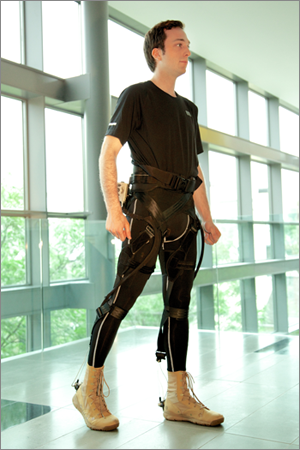Super soldiers with robotic suit
So far we had seen different science fiction movies in which a common soldier could become a super soldier using only a special outfit or getting into a robotic skeleton that increased his strength.
Well, apparently this kind of science fiction suits jump from films to real life. According to research by the WYSS Institute of Harvard and under a contract awarded by DARPA (Defense Advanced Research Projects Agency) in the United States. An outfit called “Soft Exosuit” is a pants-type garment that would allow soldiers to travel greater distances and reduce fatigue, this suit would be able to increase the strength and endurance of the user.

True Super Soldiers using a Robotic Suit
The development of this technology seeks to prevent and reduce musculo-skeletal injuries for military personnel and could also be used in people with reduced mobility.
Researchers have developed this prototype analyzed the biomechanics of human walking and looking for the “Soft Exosuit” generate technology developing entirely new functional garments dress forms, using energy systems, soft flexible sensors, and strategies control that allow human-machine interaction without problems.
The operation is based on flexible sensors that capture accurately the movements of the muscles of the legs and send signals to small engines to support the movement that the user is performing.
According to Professor Conor Walsh from WYSS Institute, the Light “Soft Exosuit” is designed to overcome the challenges of traditional heavier exoskeleton systems, it´s battery packs with high consumption and rigid components that interfere with the natural movement of the joints. The “Soft Exosuit” is made of soft textiles, functional fabrics together in a clever piece of clothing that can be used like a pair of pants and can be used under normal equipment of a soldier. Through a biologically inspired design, this suit mimics the action of leg muscles and tendons when a person walks, and provides a little and careful assistance with synchronized leg joints without restricting movement uf user.
The current prototype uses a series of belts that are used around the waist and there are the low-power processor that interprets the sensor signals of the garment and determine the user’s position, tenseness of suit, if it walks, among other signals.
The following video explains a little more and show some evidence
If you want more information you can visit the website of the Wyss Institute.
